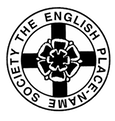Roseberry Topping
Early-attested site in the Parish of Newton
Historical Forms
- Othenesberg, Ohensberg 1119,1129 Guis
- Ohtnebercg 1147–53 Whitby
- Otheneberg 1170–90 YCh a.1199,c.1210 Guis
- Outhensbergh 1239 Guis
- Ounesbergh c.1303–18 Whitby
- Ounesburgh 1409 IpmR
- Ouesbergh (sic) 1404 YI
- Ounsbery or Rosebery Topping 1610 Camden
Etymology
The forms with Ou - at first suggest that the first element is the ON pers. name Auðunn (LindN), but they are not inconsistent with a more interesting derivation, viz. that Othenesberg is a Scandinavian parallel to the well-authenticated OE Wodenesbeorg (cf. IPN 38) and that this remarkable hill was a centre of the worship of Othin, the Scandinavian equivalent of Woden. There is an exact parallel to the name in the Danish Onsbjærg in Samsø, v. Samsøs Stednavne 48.
The editor of the Whitby Cartulary (Surt. 69, p. 166 note) says that there was an OAngl name Hreosabeorh and that this has given the modern Roseberry . There is no evidence at all for this. The change from Oues - to Rose - is due to metanalysis in the place-name Newton-under -Ouesbergh (v. Newton 163supra ), just as the modern common river-name Ree has come from OE æt þǣre ēa (v. ea ), so Roseberry is apparently from the form under -Ouesbergh ; cf. further under Thornton Riseborough 77supra . For the influence of rose on place-names cf. Rosedale 80supra .

